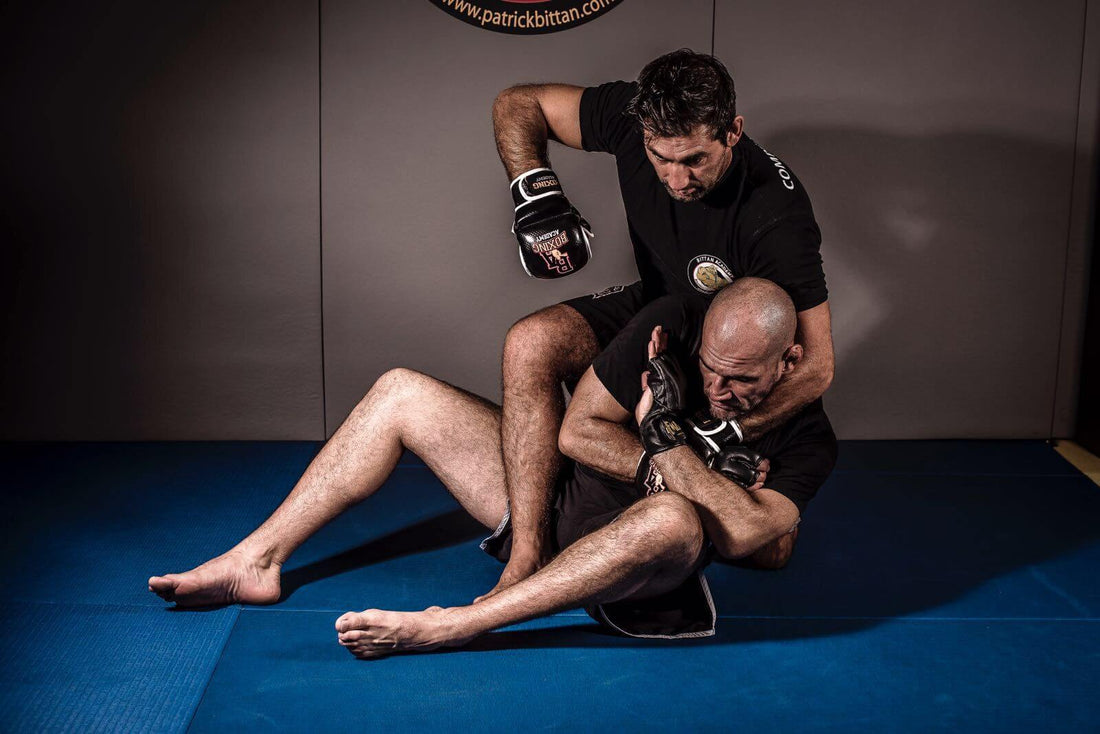
The Roots of Krav Maga: From Street Fighting to Self-Defense System
Share
Krav Maga, the renowned self-defense system used by military and civilians alike, has roots that stretch back through the tumultuous history of the 20th century. Developed in the crucible of conflict and necessity, Krav Maga's origins are deeply intertwined with the Jewish experience in Europe, the rise of fascism, and the struggle for survival.
Origins in Pre-World War II Europe:
The story of Krav Maga begins in the streets of pre-World War II Europe, where Jewish communities faced rising anti-Semitic violence. Imi Lichtenfeld, the founder of Krav Maga, was born in 1910 in what is now Slovakia. His father, Samuel Lichtenfeld, was a police officer, and Imi grew up learning various forms of street fighting and boxing from his father. These early experiences laid the foundation for what would later become Krav Maga.
The Rise of Fascism and Anti-Semitic Violence:
As fascism spread across Europe in the 1930s, Jewish communities found themselves increasingly targeted by violent attacks from Nazi sympathizers and other extremist groups. In response to this escalating violence, Imi began to develop a system of self-defense that would enable Jews to protect themselves in the face of danger.
The Birth of Krav Maga in Israel:
With the outbreak of World War II and the rise of the Holocaust, Imi fled Europe and eventually settled in what was then British Mandatory Palestine, which would later become the State of Israel. In Palestine, Imi joined the Haganah, the Jewish paramilitary organization that would later evolve into the Israel Defense Forces (IDF). It was during his time in the Haganah that Imi began to refine and codify his system of self-defense, drawing on his own experiences as well as techniques borrowed from boxing, wrestling, and street fighting.
Adapting to Modern Warfare:
After the establishment of the State of Israel in 1948, Imi continued to develop and teach his system of self-defense to members of the IDF. As Israel faced constant threats from its neighbors, Krav Maga evolved to meet the challenges of modern warfare. Imi emphasized simplicity, efficiency, and effectiveness, teaching soldiers how to neutralize threats quickly and decisively.
From Military Training to Civilian Self-Defense:
In the 1960s, Imi began to teach Krav Maga to civilians as well, recognizing the need for ordinary people to be able to defend themselves in dangerous situations. Krav Maga quickly gained popularity both in Israel and abroad, thanks to its practicality and effectiveness.
Global Spread and Recognition:
In the decades that followed, Krav Maga spread around the world, becoming one of the most widely practiced forms of self-defense. Today, Krav Maga is taught in schools, military units, and law enforcement agencies across the globe, and Imi Lichtenfeld's legacy lives on through the countless students who continue to practice and teach his system.
Conclusion:
Krav Maga's roots lie in the struggles of the Jewish people against oppression and violence. Developed in response to the rising tide of fascism in pre-World War II Europe, Krav Maga evolved into a highly effective self-defense system that is now used by military personnel, law enforcement officers, and civilians worldwide. Imi Lichtenfeld's vision of empowering individuals to protect themselves in dangerous situations continues to inspire practitioners of Krav Maga to this day.
Origins in Pre-World War II Europe:
The story of Krav Maga begins in the streets of pre-World War II Europe, where Jewish communities faced rising anti-Semitic violence. Imi Lichtenfeld, the founder of Krav Maga, was born in 1910 in what is now Slovakia. His father, Samuel Lichtenfeld, was a police officer, and Imi grew up learning various forms of street fighting and boxing from his father. These early experiences laid the foundation for what would later become Krav Maga.
The Rise of Fascism and Anti-Semitic Violence:
As fascism spread across Europe in the 1930s, Jewish communities found themselves increasingly targeted by violent attacks from Nazi sympathizers and other extremist groups. In response to this escalating violence, Imi began to develop a system of self-defense that would enable Jews to protect themselves in the face of danger.
The Birth of Krav Maga in Israel:
With the outbreak of World War II and the rise of the Holocaust, Imi fled Europe and eventually settled in what was then British Mandatory Palestine, which would later become the State of Israel. In Palestine, Imi joined the Haganah, the Jewish paramilitary organization that would later evolve into the Israel Defense Forces (IDF). It was during his time in the Haganah that Imi began to refine and codify his system of self-defense, drawing on his own experiences as well as techniques borrowed from boxing, wrestling, and street fighting.
Adapting to Modern Warfare:
After the establishment of the State of Israel in 1948, Imi continued to develop and teach his system of self-defense to members of the IDF. As Israel faced constant threats from its neighbors, Krav Maga evolved to meet the challenges of modern warfare. Imi emphasized simplicity, efficiency, and effectiveness, teaching soldiers how to neutralize threats quickly and decisively.
From Military Training to Civilian Self-Defense:
In the 1960s, Imi began to teach Krav Maga to civilians as well, recognizing the need for ordinary people to be able to defend themselves in dangerous situations. Krav Maga quickly gained popularity both in Israel and abroad, thanks to its practicality and effectiveness.
Global Spread and Recognition:
In the decades that followed, Krav Maga spread around the world, becoming one of the most widely practiced forms of self-defense. Today, Krav Maga is taught in schools, military units, and law enforcement agencies across the globe, and Imi Lichtenfeld's legacy lives on through the countless students who continue to practice and teach his system.
Conclusion:
Krav Maga's roots lie in the struggles of the Jewish people against oppression and violence. Developed in response to the rising tide of fascism in pre-World War II Europe, Krav Maga evolved into a highly effective self-defense system that is now used by military personnel, law enforcement officers, and civilians worldwide. Imi Lichtenfeld's vision of empowering individuals to protect themselves in dangerous situations continues to inspire practitioners of Krav Maga to this day.




